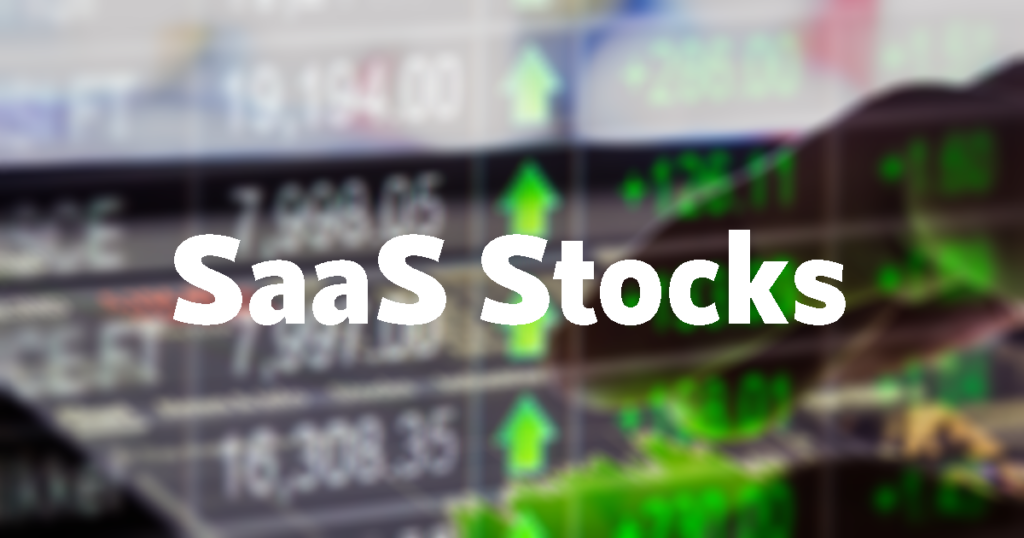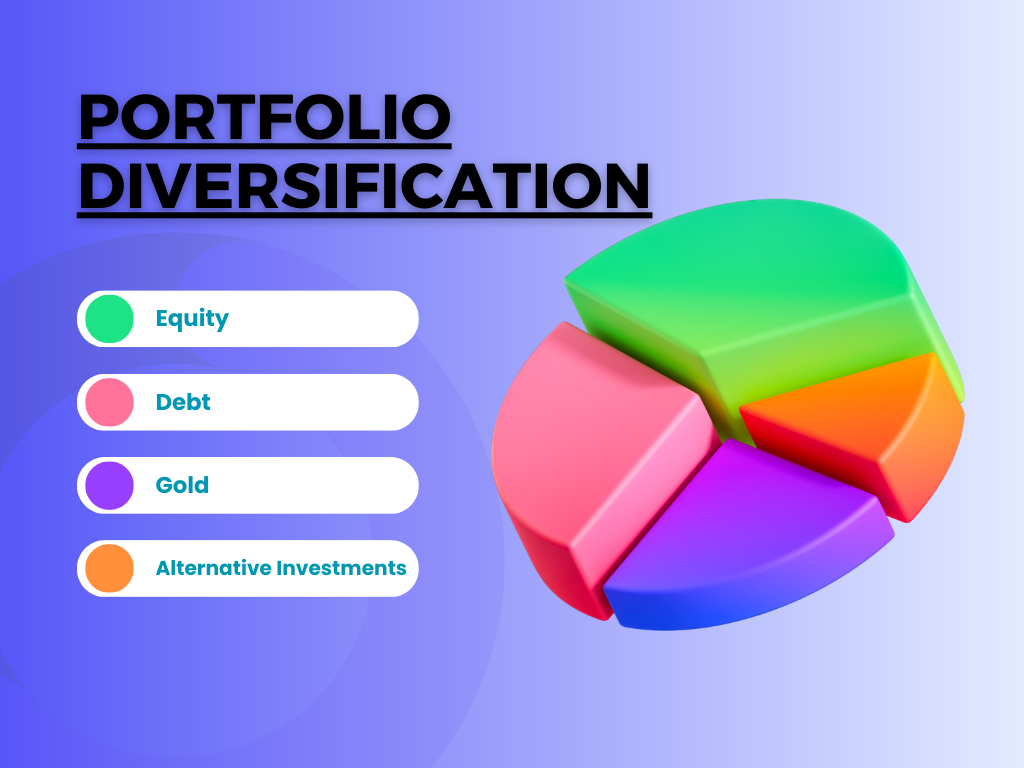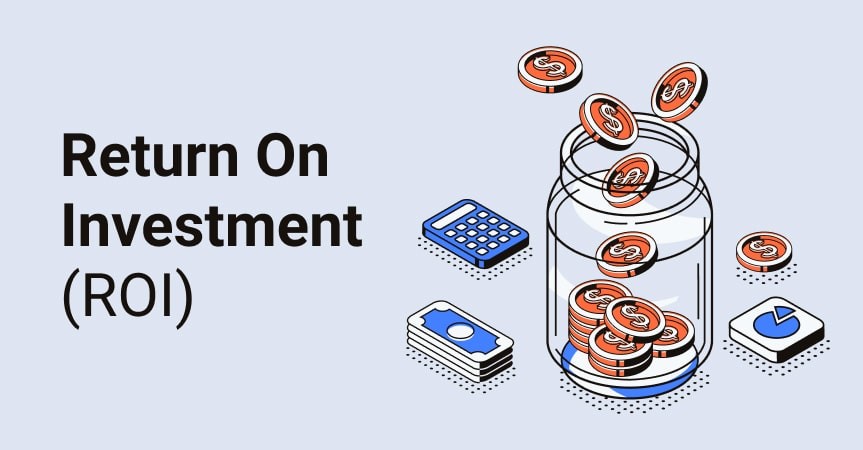Have you ever wondered why the world’s savviest investors are buzzing about SaaS stocks? This sector is like a hidden gold mine, where data-driven decisions meet high growth potential.
We’re talking about an industry projected to hit $883 billion by 2029. A sector fueled by cutting-edge tech such as AI and cloud computing. And did we mention its uncanny ability to weather economic downturns?
But what makes SaaS stocks stand out in a crowded investment landscape?
In this post, you’ll learn how hedge fund managers leverage these assets for stellar returns. We’ll spotlight top-performing players like Adobe Inc., analyze profitability metrics of firms like Box Inc., and discuss future trends shaping this lucrative market.
Get ready, because we’re diving deep into the world of SaaS stocks. We’ll unpack everything you need to know about this exciting investment opportunity.
Unveiling the SaaS Industry
The SaaS industry is revolutionizing the corporate landscape, offering software products that can be accessed from any internet-connected device. It’s like magic – software products, once confined to physical disks and specific machines, are now accessible from anywhere with an internet connection. High-growth SaaS stocks such as Adobe Inc., Equinix Inc., and Box Inc. represent this shift towards digital accessibility.
Insider Monkey, an investment-focused platform, lists these companies among their top 5 best SaaS stocks to buy now.
Understanding Cloud Computing and its Connection to SaaS
In essence, cloud computing forms the backbone of the SaaS industry. This tech marvel allows for convenient on-demand access to shared pools of configurable resources that can be rapidly provisioned with minimal management effort or service provider interaction.
To put it in simpler terms: think about Netflix or Spotify. These services give you access to thousands of movies or songs without needing you to store all that data on your device – that’s essentially what cloud computing does for businesses.
This revolution has not gone unnoticed by hedge funds either. Seeing potential returns, they’ve turned their attention toward high-growth Saas stocks within market-leading software companies like Autodesk Inc., Veeva Systems Inc., and The Descartes Systems Group Inc.. So if we’re talking growth rate – let’s just say things are looking promising.
However impressive this may sound; there’s more. The broader cloud computing industry projects a value close to $883 billion by 2029 end (cough cough, high growth).
Discover the magic of SaaS. Once trapped in disks, your favorite software is a click away. Adobe, Equinix, and Box Inc., are leading this digital revolution. #SaaSMagic #InvestSmartClick to Tweet
Key Benefits and Features of SaaS Stocks
Software as a Service, or SaaS stocks, are creating waves in the investment world. These companies have brought significant changes to businesses by providing access to software products from anywhere with an internet connection. This shift towards cloud-based solutions has led to cost savings and improved resource management capabilities for many firms.
Exploring Cost Savings with SaaS Solutions
The adoption of SaaS platforms is leading businesses down a path of financial efficiency. Companies that use these services often see considerable cost savings due to their hardware agnosticism, meaning they don’t need expensive equipment on-site because everything runs through the cloud.
In addition, data security provided by these services reduces costs related to breaches or lost information. The ease-of-use factor also comes into play here – less time spent on training means more resources can be allocated elsewhere within your organization.
An example? Consider collaboration software – one of the fastest-growing sectors within the SaaS industry (Cantillon Capital Management). With its predicted CAGR at 21.8%, it’s clear how such technology streamlines communication efforts while cutting expenses tied up in travel or physical meetings.
Navigating Resource Management via Cloud Computing
Moving operations onto a digital platform lets you manage resources more effectively – whether human capital or tangible assets like office space and machinery used for production purposes (think supply chain optimization). Such features make SaaS stocks particularly appealing for hedge fund investors seeking innovative avenues offering solid returns along with stability offered by established players in this field.
A classic case is customer relationship management tools (CRM) delivered through a SaaS model which lets businesses centralize customer data, improve tracking of interactions, and ultimately boost sales through personalized marketing strategies.
On the financial management front, SaaS products are game-changers too. From accounting software that streamlines tax preparation to payroll systems making employee compensation a breeze – these services can save countless hours and dollars for firms large or small.
Wrapping it up, and putting your money into SaaS stocks isn’t just an incomplete thought. It’s a smart move that could lead to significant returns in the tech-driven market we’re seeing today.
Key Takeaway:
clear that the SaaS industry is not only transforming how businesses operate but also driving strong returns for investors. From slashing operational costs to enhancing resource management and sales performance with personalized strategies, investing in these innovative cloud-based solutions can be a game-changer.
Investing in Profitable SaaS Stocks
The SaaS sector has seen explosive growth, with profitable stocks like Adobe Inc. (ADBE), Equinix, Inc. (EQIX), and Box, Inc. (BOX) leading the charge.
Why are hedge fund investors giving their attention to these rapidly-growing SaaS stocks?
Noteworthy Hedge Fund Investors in SaaS Stocks
Abdiel Capital Advisors, for instance, is a small-cap firm known for its investment prowess within the tech industry – particularly software companies offering innovative solutions via cloud computing.
This kind of investor activity underscores the revenue growth potential inherent to successful firms operating within this digital realm.
A shining example would be The Descartes Systems Group Inc. (DSGX). As an enterprise resource planning provider, they have demonstrated solid annual growth through their unique customer relationship management products which help businesses streamline operations and increase efficiency across departments.
Veeva Systems Inc. (VEEV), on the other hand, specializes in life sciences industry software that enables pharmaceutical companies to better manage data analytics pertaining to clinical trials as well as regulatory compliance measures thereby saving time and resources along product development cycles.
Solid Performance Monitoring Is Key
In assessing such investments it’s crucial not just to look at market capitalization but also to focus on indicators like quarterly sales growth which can give insights into how well a company is doing against its peers or even wider market trends. For instance, Adobe reported 9.9% quarter-on-quarter sales growth while Autodesk clocked 13%. Both had significant hedge fund interest in Q3 2023 indicating investor confidence.
SPS Commerce, Inc. (SPSC) is another SaaS player to watch. This company offers a wide range of cloud software solutions that have caught the attention of many savvy investors like Jim Simons’ Renaissance Technologies which has been expanding its tech portfolio lately.
A Peek Into The Future
It appears that you forgot to provide the paragraph you want me to rewrite. Could you please share it? I’ll then give my best shot at improving its flow and readability while keeping a professional tone of voice.
Key Takeaway:
With their innovative cloud solutions, tech companies like Adobe, Equinix, and Box have caught the eye of investors. Abdiel Capital Advisors is one such firm that sees great potential in these high-growth SaaS stocks. They’re not alone; The Descartes Systems Group and Veeva Systems are also on the radar due to their unique products that help businesses ramp up efficiency.
Evaluating the Performance of Top SaaS Companies
Let’s dig into how to assess top-performing SaaS companies. Market cap and revenue growth serve as two key indicators.
Understanding Market Cap in Evaluating SaaS Stocks
A company’s market capitalization, or ‘market cap’, is a critical factor when evaluating its stability and size. Think of it like an ice cream sundae—the bigger the scoop (or in this case, the market cap), the more satisfying it could be for investors.
Market cap provides insight into how much a company is worth according to stock market standards. It essentially puts a price tag on a firm’s equity value, allowing us to compare apples-to-apples when sizing up different software products from diverse companies.
Largest shareholders often make their investment decisions based on this figure since larger firms tend to offer greater financial security compared with smaller ones. So if you’re eyeing Saas stocks akin to betting big at Vegas casinos, knowing about ‘market caps’ can help keep your money safe.
Analyzing Revenue Growth
Moving onto our next measure—revenue growth. As thrilling as watching sports cars race on TV – high-speed revenue growth indicates strong demand for services or products offered by any given SaaS company.
To illustrate, let’s talk numbers—a tale of two titans: Adobe Inc., versus Autodesk.
In Q3 2023, Adobe Inc. reported 9.9% quarterly sales growth and boasted being backed by no less than 93 hedge fund holders. On the other hand, Autodesk reported a slightly higher 13.3% quarterly sales growth but had only 62 hedge fund backers.
What’s our takeaway here? High revenue growth often signals potential for future earnings and hence can be more attractive to investors—much like a high-speed chase excites car racing fans.
Checking Out Hedge Fund Activity
Finally, let’s shift our focus to the activity of hedge funds – another thrilling facet to consider.
Key Takeaway:
Also, it’s essential not to overlook hedge fund activity. This is because their movements can often indicate future trends in the market. They’re known for making calculated decisions based on deep research and analysis, so keep an eye out.
Future Trends in the SaaS Industry
The SaaS industry is no stranger to innovation. The SaaS industry is continuously exploring new possibilities, particularly with the implementation of tech like AI and data analysis into their services.
This evolution doesn’t stop with AI assistants for sales and marketing teams or security platforms; instead, these advancements serve as stepping stones toward more integrated solutions. This means we can expect more groundbreaking changes on the horizon that will shape the future of this high-growth sector.
Leveraging Artificial Intelligence in Sales and Marketing
Salesforce has already shown us how AI integration can revolutionize CRM systems. Their intelligent assistant helps streamline processes by automating repetitive tasks, allowing businesses to focus their resources elsewhere. But let me tell you something: we’re just scratching the surface here. The next wave of AI implementation could bring about personalized virtual assistants capable of conducting business negotiations or making strategic decisions based on real-time data analysis.
Data Platform Development: An Essential Trend in SaaS
The advent of Big Data brought forth a need for advanced tools that simplify complex analytical processes – enter data platform development. Companies are now building robust platforms that make use of machine learning algorithms for insightful decision-making. Databricks’ Unified Data Analytics Platform, for instance, lets users process large volumes of data quickly while gaining meaningful insights from it – all under one roof.
Moving Beyond Cloud Computing?
Cloud computing gave birth to SaaS by letting us access software products from anywhere with an internet connection – pretty cool if you ask me. Now imagine extending this accessibility even further, like making your software available offline or integrating it directly into hardware devices. As the IoT advances, it’s likely that software could be made accessible offline or even integrated into hardware devices in the near future.
Increased Demand for Security and Compliance
step up their game. They’ll need to ensure top-notch security protocols are in place, not just as a legal requirement, but also to gain the trust of users and stay competitive in this data-driven world.
Key Takeaway:
The SaaS industry continues to innovate, integrating cutting-edge technologies like AI and data analytics. Future trends include more advanced AI assistants for sales and marketing, the development of comprehensive data platforms that simplify complex analysis processes, extending software accessibility beyond cloud computing into hardware devices with the rise of IoT, and an increased focus on security protocols due to growing demand.
Conclusion
Cracking the code of SaaS stocks isn’t an overnight feat. It requires a deep dive into the sector’s unique features, its high-growth players like Adobe Inc., and hedge fund trends.
But you’ve done it. You’ve grasped how AI and cloud computing are fueling this industry’s growth to potentially reach $883 billion by 2029.
You’ve also understood that evaluating profitability metrics is key in investment decisions, with case studies such as Box Inc. showing just how critical these insights can be.
The power of collaboration software has been highlighted too, promising exciting returns for future-focused investors who spot opportunities early on.
Above all, remember: that investing in SaaS stocks is about leveraging data-driven insights for strategic market moves. This knowledge arms you with what you need to succeed in your own investment journey!
If you want to learn more about this, sign up for my newsletter.


